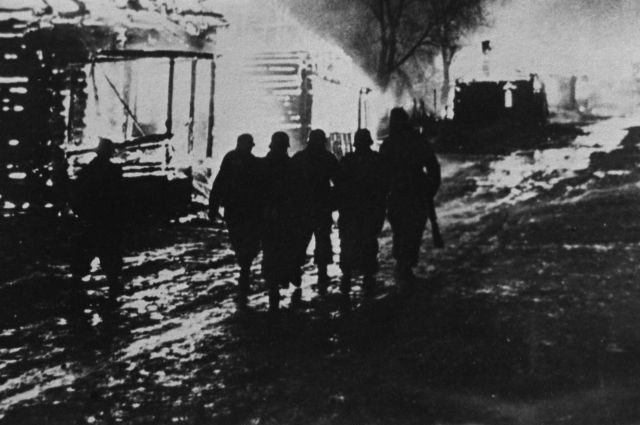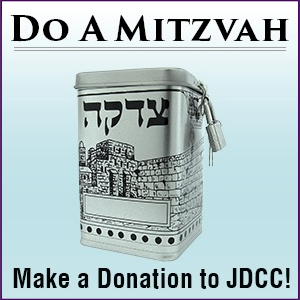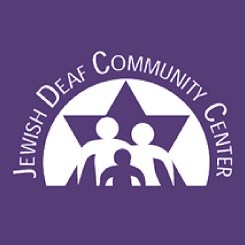December 15, 2021
Azlyrics.com/az
The plot of the Great Patriotic War
80 years ago, 16 December 1941, in Brest, the Nazis created a Jewish ghetto. When the Germans entered the city in 1941 year, Jews made up about half of the population of Brest; 27 thousand people. A year later, with extra of only 19 people survived. They saved their lives thanks to the feat of people who would later be called the Righteous Among the Nations.
Most of the victims are known by name the personal files of the prisoners of the Brest ghetto have been remarkably preserved. Jews had to fill out a questionnaire, which, in addition to name, age, marital status, presence of children, contained a photo and fingerprint.
One of the first about these surviving folders was told by the director Ioanas Misiavičius in the film Brest Ghetto (1995 g.). This documentary was nominated for an Oscar and highly acclaimed Steven Spielberg , author of Schindler’s List. Shrill shots when one of the survivors in ghetto children, already being gray-haired, leafs through folders and finds his mother’s profile. Touchingly ironing the sheets, peering at the photograph.
600 corpses were placed in the pit
As soon as the Germans entered Brest, they began to eliminate the representatives of the previous government. They helped them in documents left by the top of the Soviet leadership of the city, which in a hurry left Brest. The fascists had all the names and addresses in their hands. On the night of 6 July 1941, the Germans arrested more than 6,000 men who worked in Soviet institutions. All of them were tortured and shot.
A few days later, on July 10, 1941 g., The first mass execution of Jews will take place in Brest. Participants in this crime, officer of the 307th police battalion Heinrich, after the war, gave testimony: “ On the day of this action, the rise was organized at three o’clock. The gathering of Jews and building them on streets inside the Jewish quarter continued until 6 in the morning. The place of execution was located south of Brest-Litovsk … In total, there were 12 ditches measuring 10 meters in length, 2.5 meters in width and 3-4 meters in depth. I think that in one such pit there were about 600 corpses. To avoid an error regarding the number of Jews we shot on that day, since I previously named 10 000, I want to emphasize here that during the time of the action that I have to describe, about 6,000 Jewish men were shot. From subsequent conversations, I learned that their allegedly were 10,000.
While the Jews were handing over their belongings, the commanders distributed the riflemen. The shot was fired in this way: the tip of the bayonet was attached to the back of the victim’s head, after which the rifle tilted at 45 degrees and followed by a shot. The Jews were forced to lie down on both sides of the ditch, with their stomachs on the ground so that their heads protruded over the pit.
We, the arrows, then had to dump the corpses into the ditch. According to this system, executions took place throughout the first half of the day. At first, 10-12 people came up to one of the long sides of the ditch at the same time for execution. Then it became impossible to maintain such a steady pace, and executions were already carried out in a disorderly manner.
This promotion ended by 16 o’clock. After the end of the action, we were taken by trucks to our apartments. The service on this day was over… ”
Moishe became her eighth child
The most massive punitive operations to the destruction of civilians, most of whom were Jews, took place near Brest near the railway station Bronnaya Gora. By the beginning of 1943, of the 27 thousand Jews in Brest, 19 people remained alive. About they knew only those who with risk to their lives and lives of all members of their family sheltered the fugitives. Among the miraculous survivors was 9-year-old Moisha Engelman: when the residents of the ghetto were driven to their last way to Bronnaya Gora, my mother managed to shout to him to go to her friend Pelageya, if she survived… And he came to Belarusian Pelageya Makarenko… The woman raised seven of her own children and Moishe, whom Pelageya began to call Michael, became her 8th child. The woman never separated him from his relatives. Some relatives learned that Moisha the rescued Jewish boy only when he decided to start a family himself.
In the 1990s, a video interview with Pelageya Filippovna was recorded. Standing on crutches, she told how she didn let Mikhail go beyond her own yard so that he didn’t fall into the eyes of the Germans. But once it all happened. The boy’s curly head flashed by, attracted attention, and the German shouted: “ Yude! Youda! (Jew German) Polina’s son Valery who was playing with Mikhail blocked him with his body. While the boy was running away from the yard, Valery rushed to feet to the German with shouts: “ Bruder! (brother German) Niht ude! (not Jew) ”. So the second time, death bypassed Mikhail.
They escaped and sailed to Argentina
Five more Jews found shelter in Pelageya’s house. Sisters Maya and Zhenya Katsaf lived with her winter. During the day they hid in the shed. And at night came to the house. Pelageya Filippovna recalled: “We will cover the windows with blankets, and they cooked their own food. Cook, wash, wash, and as it dawns they are returning to the barn… So the winter and overwintered. And then Maya asked: You somehow help us to get to High… I asked for a neighbor. He took them there. From there a note to me: We in place. Thank you. And latest news from them from French Brest, from ship. They sailed to relatives in Argentina.
Six months in a tent in the courtyard of Pelageya Makarenko hid family Munker: Israel, his deaf-mute son Heneck and twelve-year-old daughter Lilya… Munker was friends with brother of Pelageya Filippovna Petr Golovchenko. When Israel’s wife died in the ghetto, he realized that he had to save his family. Pyotr Golovchenko by this time was a cab. On his horse, he took out garbage from the ghetto. In a carriage with garbage, he and took the Munker family out of the cordon and hid with himself.
“We, Slavs, are responsive to someone else’s grief “
Not times the Germans came to the house of Peter and Pelageya with searches. Pelagia’s heart was ready to jump out of chest from excitement. She prayed, and it helped her to maintain outward calmness. The woman opened a temporary hut in front of the Germans, led them to the shed, where the sisters lay holding their breath in the hay, and convinced that she was not hiding anyone. Pelageya Filippovna, decades later, admitted that everything inside her turned from fear into such minutes, and she believes that God saved them all.
Later, after the arrests began, the Munker family disappeared. About the that they survived, Pelageya Filippovna found out in the mid-90s. Former prisoners have found their savior. Pelageya Filippovna Makarenko herself, all these half a century, did not not mention her feat. The Manker family initiated the fact that Pelageya Filippovna Makarenko, her brother Pyotr Filippovich Golovchenko and his wife Sophia received the honorary title The Righteous Among the Nations.
The award was presented to Pelageya Filippovna on May 27, 1998. To the question why then, during the time of the occupation, she was not afraid to help the prisoners of the ghetto, the 86-year-old woman answered: “ I could not act differently … We, Slavs, are responsive to other people’s grief. .. It was necessary to help keep them life … She lived another 8 years, ending her earthly days at the age of 94 years and becoming a living testimony to the words from Bible: “The righteous will never ever waver, the wicked will not live on earth.”




